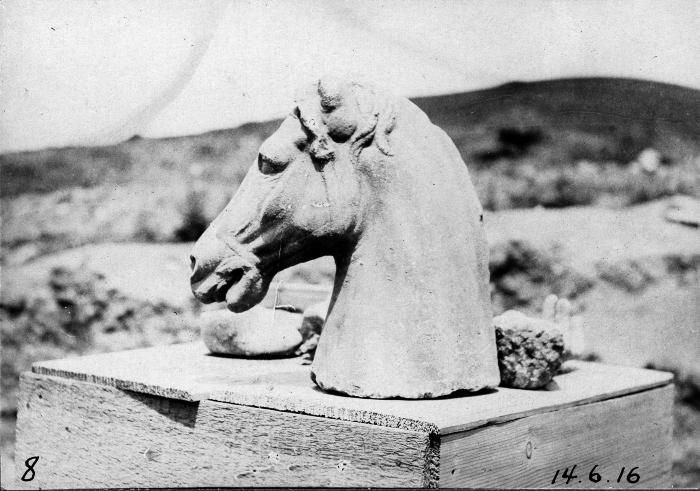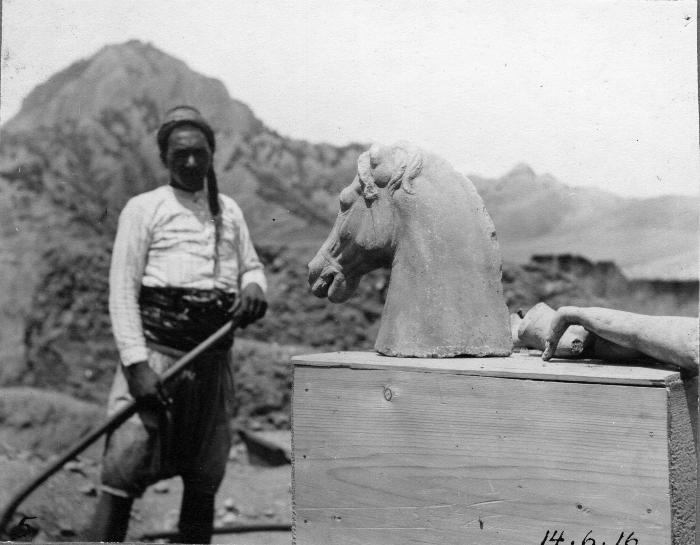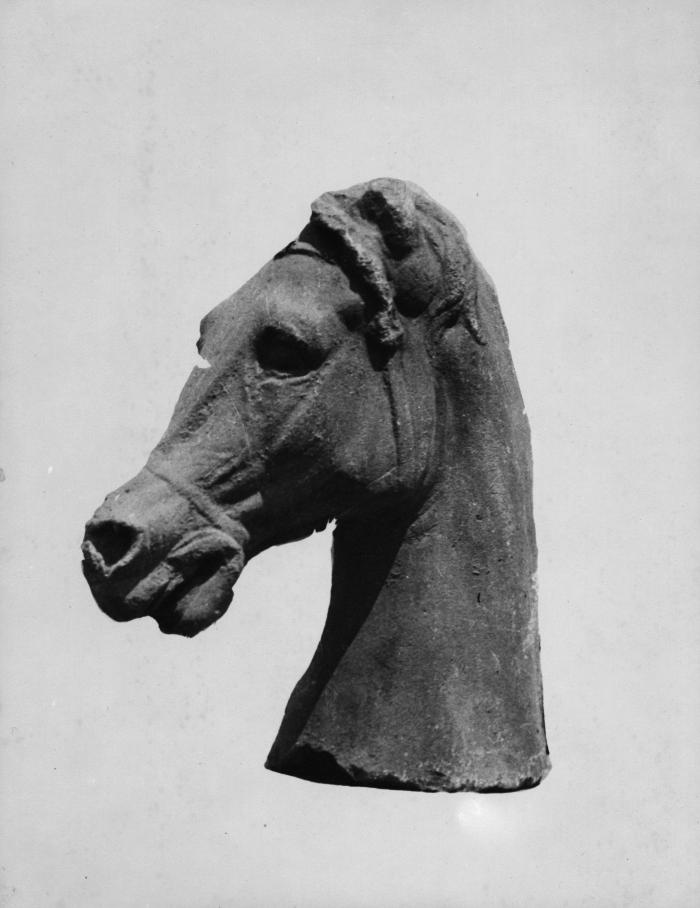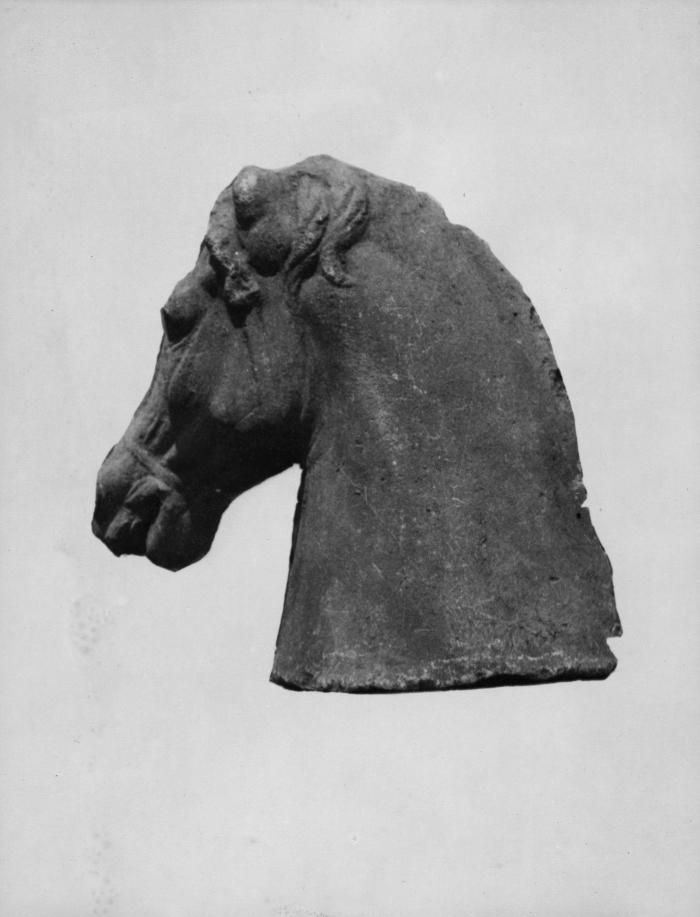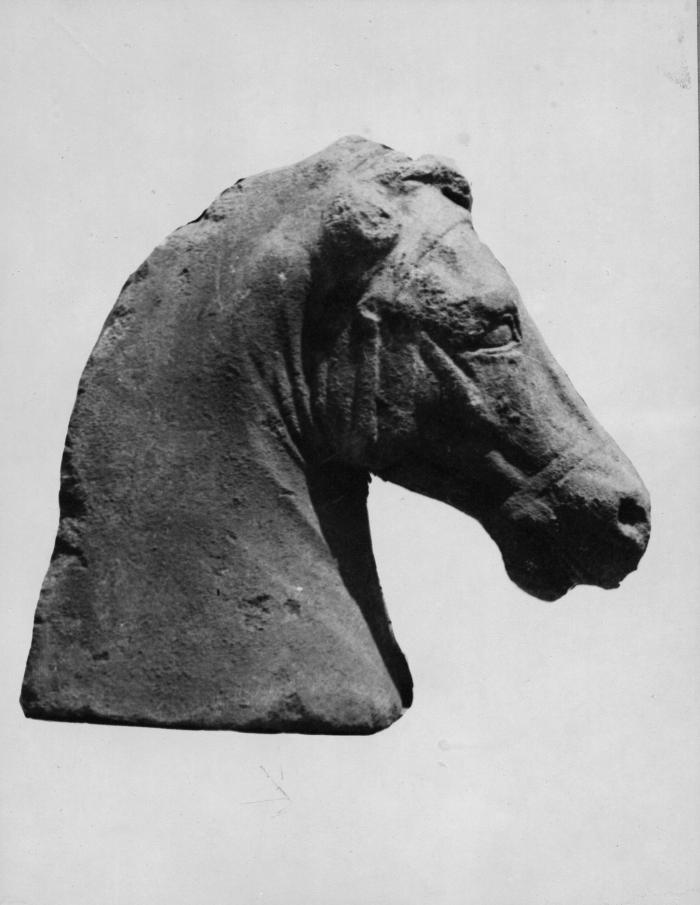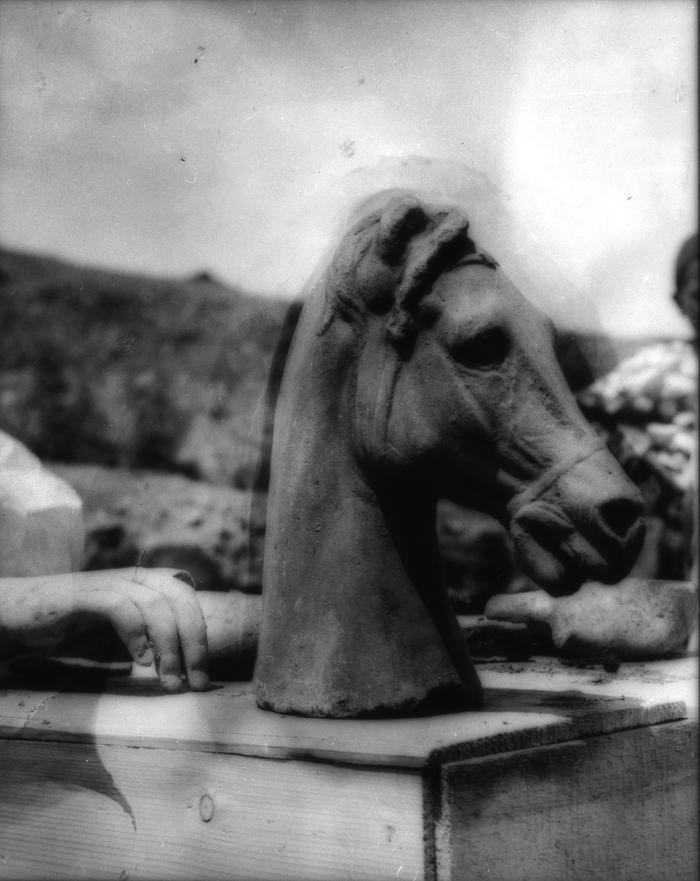Head of a Horse
- Date
- Hellenistic
- Museum
- Baltimore, Walters Art Gallery, 23.173
- Museum Inventory No.
- 23.173
- Sardis or Museum Inv. No.
- Walters Art Museum 23.173
- Material
- Marble, Stone
- Object Type
- Sculpture
- Sculpture Type
- Animal
- Site
- Sardis
- Sector
- AT
- Locus
- AT Precinct
- Findspot
- Found by Butler in 1914. Lost between 1914 and 1919. Bought by Walters in 1922 as coming from Egypt; arrived in Baltimore 1929. Collection became public (City of Baltimore) 1931.
- Description
The head, which is turned slightly to the r., has a close-cropped mane which swings to the l. at the top. The horse's ears were erect. His lively face has small eyes beneath heavy bones, large and distended nostrils, and an open mouth with teeth showing. There are fleshy folds on his neck at the jaw. Bridle straps with a disc are on the forehead. There is evidence of the running drill, and drill holes were used to separate the two rows of teeth. The piece was finished with a file.
There is a rectangular hole on the underside near the front. The conical shape of the neck and the little-worked r. side suggest to D.K. Hill that the head sat directly on a base as an attribute of Castor and Pollux. The interest in anatomical detail and the bridle, which is prominently decorative, lead her to date the horse in the Hellenistic period.
- Condition
White marble, coarse grained.
Ears broken off, mane damaged, lower edge chipped. Iron bit remains at left of mouth.
- Dimensions
- H. 0.353 (half life size).
- Comments
- See Also
- Bibliography
- Published: H.C. Butler, Fifth Preliminary Report, 430, fig. 3; T. L. Shear, Sixth Preliminary Report, 391, fig. 1; Sardis I, 153f., figs. 172-173; “Sardis Relics Stolen,” NYT (Mar. 11, 1923); Shear, Horse and Hill, passim. To D.K. Hill's list of horse statues associated with the Dioscuri, add those from the Fountain of Juturna, Rome, in E. Nash, Pictorial Dictionary II, 12, fig. 682, and most recently in I. Iacopi, L'Antiquarium Forense, 85, fig. 83. I am grateful to G.M.A. Hanfmann for this reference.
- Author
- NHR



